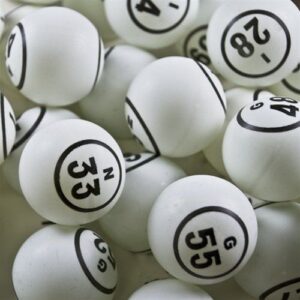 Combine shrimp tacos with a rousing game of bingo and what do you get? Way too much rowdiness for me.
Combine shrimp tacos with a rousing game of bingo and what do you get? Way too much rowdiness for me.
For the past several years, except during Covid, friends and I have gathered every month on the evening of the full moon at a Mexican restaurant on top of a hill. The dining area has a wall of windows facing east, perfect for watching the big round moon slide up over the mountains. The staff kindly reserves us a table near those windows and allows us to stay for however long we want.
It’s an evening we “Full Mooners” have always enjoyed.
But on August 1st, when the full moon coincided with Tuesday bingo night, the restaurant was so busy and so loud we could hardly hear ourselves think, let alone converse. Until that night, I had no idea that bingo night at a restaurant was a thing. In fact, I didn’t realize people still played bingo. Even as a kid, I never liked it much. A game that’s a hundred percent luck and zero percent skill gets boring fast. If memory serves me, the last time I played was at a birthday party when I was still in elementary school. We used flimsy cardboard cards, one per player. The birthday girl’s mother pulled numbers, written on notebook paper and then cut apart, out of a Tupperware bowl. We covered our squares with dried black-eyed peas. The winners received Lifesaver Sweet Story books. If you’re too young to remember Lifesaver books, you probably don’t use black-eyed peas on your bingo cards, either.
As it turns out, plenty of folks don’t share my opinion that bingo is boring. I’ve discovered that people of all ages still play it in church basements. In American Legion halls. In halls specifically designated “bingo halls.” They play in day care centers and community centers and senior citizen centers. They play in casinos. They play online.
The game is simple. Players receive cards—in some games, several at one time–with the word BINGO printed at the top. Underneath are 25 squares, laid out five-by-five. Each square—except the one in the middle, which is “free”–contains a random number. When the caller shouts out a letter (either B, I, N, G or O) and number, players who have it on their cards cover it up, either by marking with a tool called a dauber or by placing a small item like a penny, a button or a black-eyed pea on it. The first player to cover a specified pattern–horizontal row, vertical column, diagonal, four corners or the entire card (called a “cover all”)–is the winner.
But you knew all that, right? And you also knew that the called-out numbers can be written on slips of paper in a Tupperware bowl or on wooden marbles in a spinning wire cage or on ping-pong balls blown about inside a see-through box. They can also be electronically generated, which is definitely the least interesting option.
What I still can’t wrap my head around is why people think this game is fun. If you’re gathering with a bunch of friends at the Knights of Columbus hall or at a honky-tonk way out on the highway or at a child’s birthday party, I get it. Sort of. But if you’re sitting in a sticky booth at a crowded Mexican restaurant, keeping one eye on your bingo cards while simultaneously scrolling on your phone and trying to keep your kids from going bonkers, I don’t. Even if the prize is a bowl of queso dip.
For me, it’s a lot more fun to laugh and talk with the friends at my table while waiting for the moon to rise. Next week, when the only blue moon of 2023 will make its appearance, the Full Mooners and I will likely return to the Mexican restaurant on the hill to celebrate.
But only because August 30 doesn’t fall on a Tuesday.
(August 26, 2023)